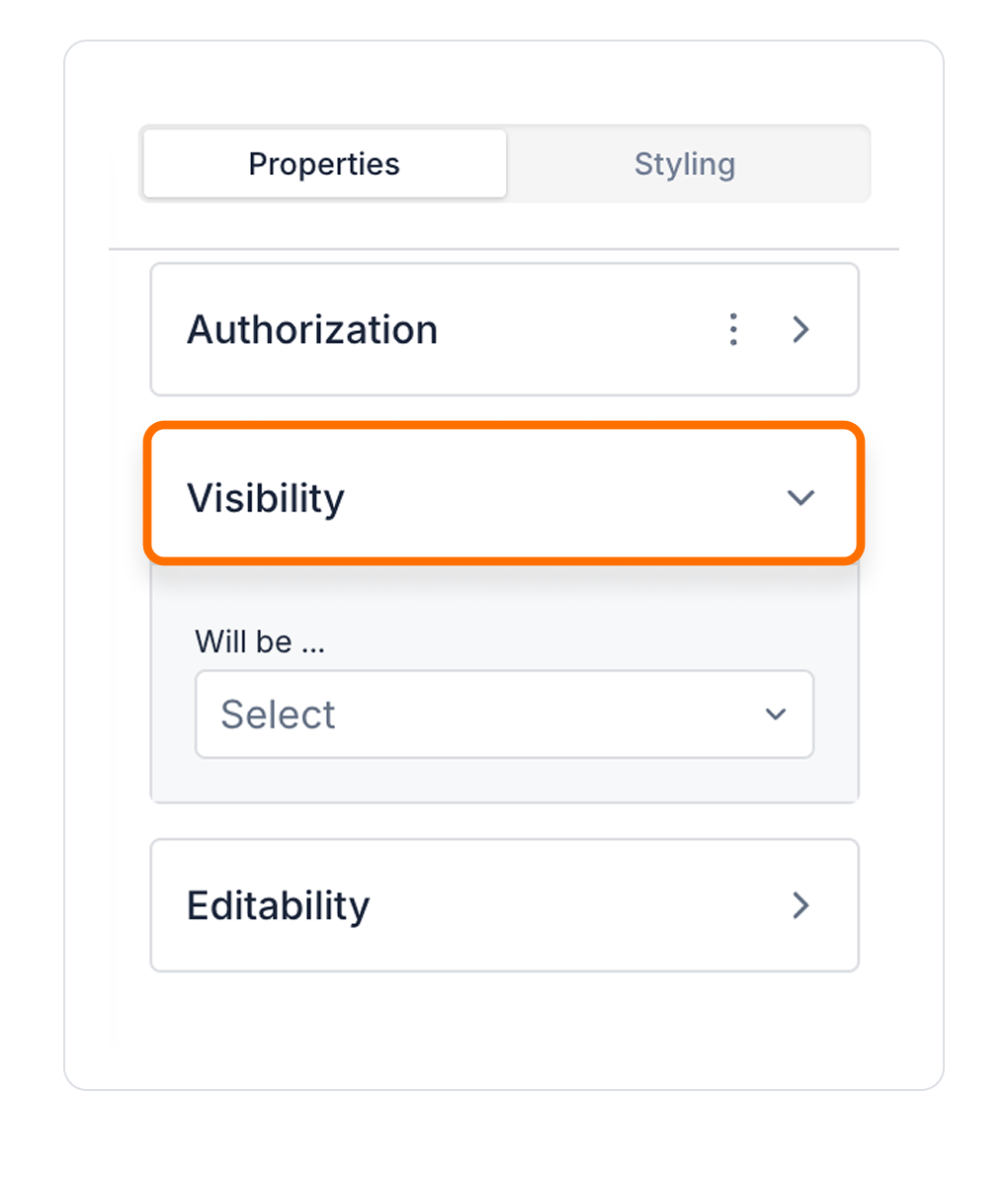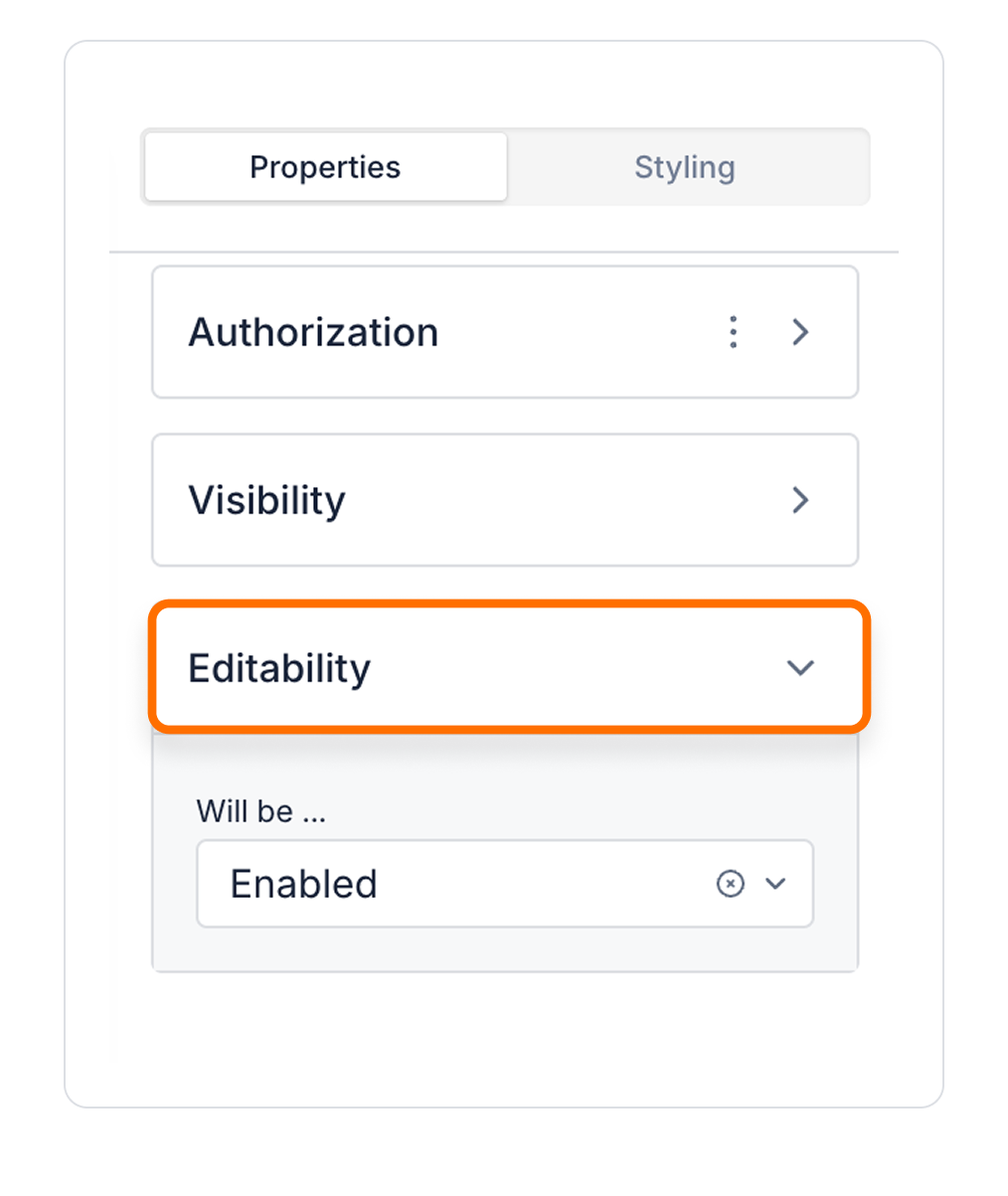

Kuika's Bar Chart element offers an effective way to compare data. This chart type visualizes the total or quantity of each category by displaying the height of data in different categories through bars. It is ideal for sales data, survey results and categorical data visualizations. This guide explains the steps for using the Bar Chart element, configuring data, and customizing its visual arrangements.
This training content consists of the following topics:

You can configure the following settings in the Properties panel:

Authorization

To manage access control at the element level, you can use the Authorization section in the Properties panel.
Access Types
Anonymous
Allows all users to view the element without logging in.
Restricted
Restricts access to only verified users or specific roles.
Unauthorized Behavior (Hide / Disable)
If the user does not have the required role, you can specify how the element should behave in the Choose field:
This setting is used to manage how unauthorized users encounter the element.
Visibility

To configure the setting:


By customizing your elements with the Styling Panel, you can create impressive interfaces for your web and mobile applications. In this section, you can configure the following settings:
By following these steps, you can configure the Area Chart element to suit your needs.